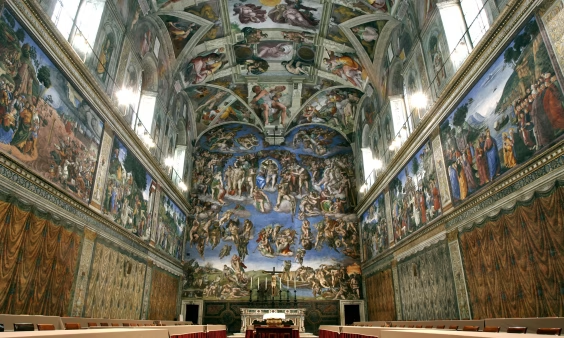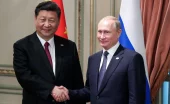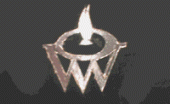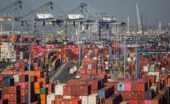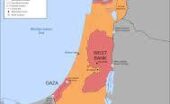Molly Minturn - My family is heartbroken to share that my father died in surgery on Monday, Feb. 10. It…
The Papacy 2024-
Written by Diana Thebaud Nicholson // May 8, 2025 // X-cutting Issues // No comments
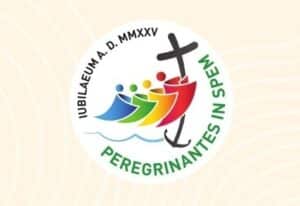 The 2025 Jubilee is a jubilee in the Catholic Church celebrated in the year 2025, announced by Pope John Paul II at the end of the 2000 Great Jubilee. The papal bull proclaiming the Jubilee is “Spes non confundit” (Latin for “Hope does not disappoint”).
The 2025 Jubilee is a jubilee in the Catholic Church celebrated in the year 2025, announced by Pope John Paul II at the end of the 2000 Great Jubilee. The papal bull proclaiming the Jubilee is “Spes non confundit” (Latin for “Hope does not disappoint”).
It runs from Christmas Eve (24 December) 2024 to Epiphany (6 January) 2026.
Something to look up to: how Michelangelo’s love and humility could influence the Sistine Chapel conclave
The artist’s frescoes hold many lessons for the cardinals who have to decide upon the next pope
8 May
Habemus Papam: Pope Leo XIV!
The new pope, US cardinal Robert Francis Prevost, will be known as Pope Leo XIV.
It’s been a long while since we had a pope with this name: last Leo, Leo XIII, was elected in 1878 and served until his death in 1903.
America’s Robert Francis Prevost announced as new pope
Bells ring in St Peter’s Square as cardinals elect successor to Pope Francis
(The Guardian) Here’s our profile of Prevost from before the conclave:
Despite the Vatican’s longstanding opposition to the idea of a pope from the US because of the country’s superpower status and secular global influence, the moderate, Chicago-born Prevost is still one to watch.
Created a cardinal by Francis in 2023, the former leader of the Augustinian order was also appointed by the late pope to the powerful Dicastery for Bishops, which oversees the selection of new bishops from around the world.
Those senior roles, combined with the fact that he has significant missionary experience in Peru, having served as bishop of the northern city of Chiclayo, may go some way to redeeming him in the eyes of those who would not usually countenance the idea of an American pope.
Catholic Church elects new pope as white smoke billows from Vatican
Eric Reguly
The Catholic Church has a new pope.
At shortly after 6 p.m., billowing white smoke emerged from the copper chimney installed on the rooftop of the Vatican’s Sistine Chapel, signalling that a pope had been elected after two days of voting.
The conclave was short by historical standards and was, by many accounts, difficult and sometimes fraught, given the broad range of views among the elector-cardinals, some of whom wanted a return to the traditional Church, others who wanted a pope who could carry on the liberal reforms of his predecessor, Pope Francis, who died in April at age 88, and still others who wanted a compromise candidate or one who was a native of Asia or sub-Saharan Africa – the two regions where the Church is growing.
The conclave was the biggest in the history of the Church, with 133 elector cardinals – those under the age of 80 – from 70 countries. … During the pre-conclave sessions at the Vatican, some of the cardinals wore name tags, since many of them had never met one another before, and many did not speak Italian, the lingua franca of the Vatican.
The sheer diversity and size of the conclave had made it entirely unpredictable, with varying lists of those considered papabili – pope-able – circulating in various media sites. None of the sites could agree who top-five contenders were, though Pietro Parolin, the Vatican’s secretary of state who had been Francis’s second-in-command, and Luis Antonio Tagle, the young-at-heart Filipino cardinal who was popular among young Catholics were listed as prime contenders.
12:30 pm
White smoke pours out of the Sistine Chapel chimney, signaling the election of a new pope
(AP) — White smoke poured from the chimney of the Sistine Chapel and the great bells of St. Peter’s Basilica tolled Thursday after cardinals elected the 267th pope to lead the Catholic Church.
The crowd in St. Peter’s Square erupted in cheers, priests made the sign of the cross and nuns wept as the crowd shouted, “Viva il papa!” after the white smoke wafted into the late afternoon sky.
The smoke signal means the winner secured at least 89 votes of the 133 cardinals participating in the conclave to elect a successor to Pope Francis.
The name will be announced later, when a top cardinal utters the words “Habemus Papam!” — Latin for “We have a pope!” — from the loggia of the basilica. The cardinal then reads the winner’s birth name in Latin and reveals the name he has chosen to be called.
The new pope is then expected to make his first public appearance and impart a blessing from the same loggia.
7 May
Electing a pope is like TV show The Traitors, says Conclave author Robert Harris
Picking a new pope could involve some political backstabbing, says author
(The Current CBC Radio) … It is an election, and the Roman Catholic Church has 1.4 billion followers. It’s immensely wealthy; it has huge global reach. The pope is the supreme ruler of the church, is God’s representative on earth. This is a contested election. It centres any disputes that may arise in the conclave … on abortion, birth control, the role of women, the place of homosexuals in society, assisted dying — these are highly political live issues. So to say that somehow this isn’t a political event seems to me crazy. Of course it is; it affects people who aren’t even members of the Catholic faith.
6 May
It’s time to pick a new pope. How does the conclave work? (audio)
(CBC Radio –The Current) Matt Galloway talks to journalist JD Flynn and writer Randy Boyagoda about who the frontrunners are, how long the conclave might be, and how the next pontiff might shape the future of the Catholic Church.
What’s in a papal name? An agenda for the Catholic Church
By Joshua McElwee
First look at new pope will include announcement of papal name
Choice of name signals agenda for coming papacy
(Reuters) – When Cardinal Jorge Mario Bergoglio emerged onto the balcony of St. Peter’s Basilica after the conclave of March 2013, few outside his native Argentina knew who he was or what kind of pope he might be.
When his papal name was announced, things became much clearer.
Taking the name of the 13th century St. Francis of Assisi, Bergoglio laid out a plan for his papacy.
St. Francis had rejected wealth and wanted to care for the poor. He had taken care of animals and the environment and appealed movingly against the wars of his time. These traits would become key themes of the 12-year papacy of Pope Francis.
5 May
Conclave confidential
What we know so far about the process for picking a new Pope
Eric Reguly, European bureau chief
(Globe & Mail) … The men in red come from everywhere and many do not know one another, since Francis appointed 108 of them, according to the Catholic News Agency, over the past dozen years. The last batch – 21 of them – came late last year. They included Francis (Frank) Leo, 53, the archbishop of Toronto, the only new North American cardinal appointed in that round.
In the crucial pre-conclave sessions in the Vatican auditorium, one of the few modern buildings in the world’s smallest state, the cardinals reportedly wore name tags because so many were strangers to one another.
…Many of the men come from countries not represented in the past. First-time cardinals include citizens of Haiti, Mongolia, Myanmar, Tonga, Cape Verde, Central African Republic, Papua New Guinea and other countries that many mere mortals could not find on a map.
The international diversity no doubt made the pre-conclave sessions difficult, intriguing, wide-ranging and tense on occasion. Many of the new or newish cardinals do not speak Italian, which is the lingua franca of the Vatican. English and Spanish are also widely spoken, though the official language remains Latin – the Vatican uses ATMs with Latin instructions. Father [Thomas] Reese, [a Jesuit priest who is the senior analyst at Religion News Services of Washington] compared the get-to-know-you encounters to “speed dating.”
Will the Catholic Church embrace Francis’s ‘messy’ ways, or clean things up?
Randy Boyagoda, novelist and professor at the University of Toronto.
(Globe & Mail) The conclave will be a referendum on Francis’s papacy, consistent with how any major election is a referendum on the person in power, their rivals, and outside pressures, as we have just learned in Canada. But it won’t be just that. Including and beyond the papacy itself, the Catholic Church has an unmatched global presence both in its self-understanding as God’s chosen vessel throughout human history, and in its size and reach – with 1.4 billion adherents, it administers religious and charitable works, and schools and hospitals around the world, while advocating for justice, peace, truth, beauty and goodness in all cultures and corridors of power.
At the same time, the church has been marred by internal corruption and concealment, sexual abuse by priests, and the historic legacies of its participation in disavowed national practices, like Canada’s residential school system. Further complicating things is the asymmetric secularization and liberalization of the wealthier parts of the world alongside increased Catholic numbers in the poorer and more conservative Global South. These factors, taken together alongside longstanding scandals, the need for more priests and questionable finances, amid many other areas of criticism and challenge, make the church an always-already source and site of reverence and support, growth and decline, suspicion and revilement. Given this irreducible, manifold reality, how limited, and limiting, it would be to frame the next pope as either an extension of Francis or a rejection.
How Pope Francis shaped the papal conclave to reflect a changing church
For the first time, the majority of cardinals to choose a pope are not from Europe, as Catholic demographics shift. But Europe remains the largest source of cardinals.
(WaPo) …Pope Francis… known as the “pope of the peripheries,” …looked beyond the traditional power center in Europe, from which the church’s center of gravity has long been shifting.
1 May
The ultra conservatives wanting to make the Vatican great again
With Trump back in the White House, the alt right are attempting a hostile takeover of the group deciding on the next pope.
(Politico Eu) A group of hardline conservative Catholics are pushing for the next pope to be better aligned to their worldview — and they don’t seem afraid to use smear tactics to discredit candidates they don’t like.
With cardinals set to enter the Sistine Chapel on May 7 to begin electing the next pope, enemies of the late Pope Francis, within and outside the group who will be choosing him, are mobilizing. A vocal faction who have discredited Francis as a heretic, the anti-pope and even the “Anti-Christ” for his supposedly liberal outlook, have been waiting in the wings. Now they see the time to strike.
Conservatives were angered by Francis’ more conciliatory stance on same-sex unions and divorce, defense of migrants, and a Vatican deal with China that gave Beijing a say in the appointment of Catholic bishops.
“The hope is to have a pontificate that concentrates more on Catholic issues, such as pro-life and family, rather than climate change and immigration,” Princess Gloria von Thurn und Taxis, a German aristocrat and doyenne of the Roman conservative Catholic scene, told POLITICO.
Some conservative influencers are pushing hard-right candidates, such as Athanasius Schneider, a bishop in Kazakhstan, who has claimed that refugees in Europe are a “mass invasion” leading to Islamization, orchestrated by political elites to diminish Europe’s Christian identity.
Other names circulating on conservative lists include Cardinal Robert Sarah, of Guinea, a prominent supporter of the Latin mass and the American Cardinal Raymond Burke, an arch-traditionalist who has endorsed U.S. President Donald Trump.
… Yet even the conservative groups themselves acknowledge they have an uphill battle. With 80 percent of the cardinal electors appointed by Francis, their best hope may be to block progressive candidates.
The conservatives are also held back by having no clear leader. Cardinal George Pell, who died in 2020, was a “kingmaker, lobbyist, and a key power player,” said a well-connected Vatican ambassador, but since he died “there is no clear leader of the pack.”
30 April
Who are the cardinals tipped to be the next pope one week before the conclave?
The conclave to elect the new pope begins on 7 May, and while there are no official candidates for the post, these are the cardinals considered to be leading the race.
Next Wednesday, 133 Cardinal electors will be locked inside the Sistine Chapel in the Vatican and begin the secret process of electing the next pope.
While much of the process is shrouded in mystery, it is known that four rounds of voting take place daily until one cardinal receives a two-thirds majority of the votes.
The process typically lasts between 15 and 20 days.
28 April
Conclave to elect new pope to start on 7 May, Vatican says
The 135 Roman Catholic cardinals eligible to vote will meet at Sistine Chapel to decide church’s next leader
The 135 cardinals eligible to vote will be sequestered between the chapel and their lodgings at Casa Santa Marta, the guesthouse where Pope Francis lived during his 12-year papacy, for however long it takes to pick a new pontiff.
German cardinal Reinhard Marx told reporters on Saturday that he expected the conclave would last “just a few days”. But Anders Arborelius, a Swedish cardinal in the running for pope, told reporters before the meeting that voting could take longer “because we don’t know each other”.
What are the church’s rites for the death of a pope and the election of a new one?
(AP) The death of a pope starts a centuries-old ritual involving sacred oaths by the cardinals electing a successor, the piercing of ballots with a needle and thread after they’re counted, and then burning them to produce either the white or black smoke to signal if there’s a new leader for the world’s 1.3 billion Catholics.
Who will be next pope after Francis? Key contenders ahead of conclave.
Ahead of the conclave to select the next pope, names circulating include cardinals Bo of Myanmar, Tagle of the Philippines and Italians Pizzaballa and Parolin.
(WaPo) Fifteen to 20 days after the death of Pope Francis, cardinals of the Roman Catholic Church will shut the doors of the Sistine Chapel to pick his successor. It is set to be the largest conclave in the history of the faith and also one of the most unpredictable.
26 April
Pope Francis remembered in funeral mass attended by world leaders and 200,000 mourners
Eric Reguly, Globe and Mail European bureau chief
Presidents, royalty and a multitude of mourners bade farewell to Pope Francis on Saturday at his funeral, where a cardinal said the pontiff’s legacy of caring for migrants, the downtrodden and the environment must not die with him
Pope Francis’s funeral took the shape of a mass pilgrimage and unofficial global summit as the Vatican’s St. Peter’s Square filled to bursting with pilgrims, presidents, and refugees.
The Vatican estimated that more than 200,000 pilgrims from all over the world had arrived before the funeral started at 10 a.m., making it one of the largest funerals in Vatican – and European – history. They began filling the square well before dawn, a testament to the popularity of Francis among Catholics and non-Catholics alike.
The crowds spilled into the streets around the basilica and onto two bridges over the nearby Tiber River, where they had no view of the event but could hear the hymns. Some of the faithful, unable to get near St. Peter’s Basilica, entered nearby churches to pray in silence.
… Francis’s coffin was sealed on Friday evening in St. Peter’s Basilica, where he lay in state for three days. The Vatican said that day that 250,000 visitors have filed past his then-open coffin to pay their respects. Some of the faithful were annoyed by visitors posing for selfies near the open coffin.
The funeral started at 10 a.m. local time and ended at noon, after which the funeral procession took the coffin through the streets of Rome to Santa Maria Maggiore, Francis’s favourite basilica in Rome. He broke with tradition by asking to be buried there, not in the crypts beneath St. Peter’s, which hold the tombs of some 140 popes.
In keeping with his desire for simplicity, Francis chose to be buried in a simple wooden coffin.
Analysis: Pope Francis and his legacy: How he likened (inclusive) capitalism
Famous Faces Were in the Crowd at Pope Francis’ Funeral
(NYT) President Trump, Melania Trump, Prince William and President Volodymyr Zelensky of Ukraine were among those who paid respects to the pontiff in St. Peter’s Square.
Filling up the rows of nondescript chairs, according to Vatican protocol, reigning monarchs went first, including King Felipe VI and Queen Letizia of Spain. Then came heads of state, in alphabetical order according to the name of their country in French.
Only Prime Minister Giorgia Meloni of Italy and President Javier Milei of the pope’s native Argentina had priority seating toward the front.
… Away from the world leaders, among the crowds, Julian Assange, the founder of WikiLeaks who was imprisoned after his website published secret government documents in the 2010s, paid tribute to Francis with his family.
“Now Julian is free, we have all come to Rome to express our family’s gratitude for the Pope’s support during Julian’s persecution,” read a message on social media attributed to his wife, Stella Assange. The post said that the pope had written to Mr. Assange while he was in prison.
Trump’s Blue Suit at Pope’s Funeral Draws Attention
President Trump’s choice stood out in a sea of world leaders and famous faces who were dressed in customary black.
22 April
Pope Francis lies in state ahead of his funeral, set for Saturday
(AP) Pope Francis’ funeral has been set for Saturday at 10 a.m. local time in St. Peter’s Square, to be celebrated by the dean of the College of Cardinals.
Cardinals met at the Vatican to schedule Pope Francis’ funeral and burial, plan the conclave to elect his successor and make other decisions about running the Catholic Church as world leaders and the ordinary faithful grieve the pontiff’s death.
The public viewing of Pope Francis will begin as soon as Wednesday morning in St. Peter’s Basilica, after his casket is taken by procession from the Vatican hotel where he lived.
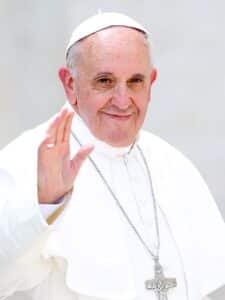 21 April
21 April
Pope Francis: A lifetime serving the poor and challenging Catholic Church orthodoxy
Eric Reguly, Globe and Mail European bureau chief
The people’s Pope
Francis, dead at 88, fought for peace and served the poor from the slums of Buenos Aires to the Vatican’s highest office
(Globe & Mail) The message was clear from the onset. Pope Francis was a street priest at heart – and by training in the rough streets of Buenos Aires. He would lead a frugal and simple existence. He would not even live in the opulent Apostolic Palace, choosing instead Vatican City’s modest Casa Santa Marta guesthouse, where he would occupy Suite 201. He would be chauffeured around in a cheap Fiat, not a luxurious Mercedes-Benz with blacked-out windows. He would not use Castel Gandolfo, the traditional papal summer residence overlooking Lake Albano in the cool, breezy hills just beyond Rome.
He would, as he would say three days after his election, want a “poor church for the poor.” He had chosen the pontifical name Francis, after Francis of Assisi, because the 13th-century friar represented “poverty and peace.” The plight of the poor, migrants and the unemployed would become the leitmotif of his messages.
Francis Worked to Make Catholic Church More Inclusive
Pope Francis sought to make the church more welcoming, global and collegial, after his predecessors adopted more doctrinaire and traditional approaches.
(NYT) The cardinals who will choose Pope Francis’ successor face a critical decision: Will they follow his path toward a more welcoming, global and collegial church or restore the more doctrinaire, traditional approach of his predecessors?
That will be the subject of intense debate among the cardinals, and Francis leaves behind a complicated legacy for them to argue over.
Early hopes that a “Francis effect” would bring the faithful back to the pews mostly failed to materialize as church attendance continued to fall in the secularized West even as it grew in the global South.
Although Francis made considerable strides in addressing the church’s sexual abuse crisis and tackled its murky financial culture, the path he put the church on for the future will be the most contentious issue.
Pope Francis has died, Vatican says
Pope had cheered faithful with Easter appearance
Francis spent weeks in hospital with double pneumonia
Pope had sought to overhaul Roman Catholic Church
Francis projected simplicity into grand role
Leaves ‘legacy of humanity, justice, human fraternity’
(Reuters) – Pope Francis, the first Latin American leader of the Roman Catholic Church, has died, the Vatican said on Monday, ending an often turbulent reign marked by division and tension as he sought to overhaul the hidebound institution.
He was 88, and had suffered a serious bout of double pneumonia this year, but his death came as a shock after he had been driven around St. Peter’s Square in an open-air popemobile to greet cheering crowds on Easter Sunday.
“At 7:35 (0535 GMT) this morning the Bishop of Rome, Francis, returned to the house of the Father.”
On Sunday, Francis had made his first prolonged public appearance since being discharged on March 23 from a 38-day hospital stay for pneumonia.
In an Easter Sunday message read aloud by an aide as the pope looked on from the main balcony of St. Peter’s Basilica, the pontiff had reiterated his call for an immediate ceasefire in Gaza.
JD Vance meets Pope Francis after Vatican criticism of migrant deportations
…on Sunday morning [20 April], Mr. Vance…did manage to see the Pope at his simple Casa Santa Marta residence behind St. Peter’s Basilica. The visit, at 11:30 a.m., lasted only a few minutes, during which time the Pope offered Mr. Vance a Vatican necktie, rosaries and, for his children, three chocolate Easter eggs.
18 April
JD Vance to spend Easter in Rome amid tiff with Pope Francis
The pope has sharply criticized the Trump administration’s mass deportation policies.
(Politico) Vance’s visit to the seat of Catholicism during the Church’s holiest days of the year comes under the shadow of his public tiff with an ailing Pope Francis and in the wake of his virulently anti-Europe comments. And as the White House increasingly leans into its Christian bonafides through its policies and messaging, the visit from the No. 2 in an administration that the Church has starkly opposed on key issues lays bare the complicated relationship between the Trump White House and Catholic Church leadership.
It also sheds light on a broader rift between conservative American Catholics, a majority of whom voted for Trump in 2024, and Francis, who condemned Trump’s mass deportation agenda and is viewed by some conservative Catholics as liberal.
The Trump administration has sparred with the Church repeatedly in the past few months over Trump’s strict immigration policies and nativist rhetoric, which differ sharply from Francis’ more progressive, pro-immigrant stances. The squabble peaked in February when the pope himself sent American bishops an extraordinary letter denouncing the president’s mass deportation agenda and slamming Vance’s understanding of a medieval theological concept.
28 February
Pope Francis suffers ‘breathing crisis’ making condition suddenly worse
Vatican says pontiff was given non-invasive mechanical ventilation, to which he responded well and remains alert
A Vatican official said the breathing crisis on Friday did not last for long and that his doctors were expected to need 24-48 hours to assess how the event would affect his clinical condition.
The episode came after three days in which the pontiff’s health had shown “slight” improvements, meaning his situation was no longer considered to be critical.
On Wednesday, a CT scan of the pontiff’s chest “showed a normal evolution” of the inflammation in his lungs, while the “mild kidney insufficiency”, which was diagnosed on Sunday, had resolved.
It is unclear how long he will remain in hospital. The Vatican said earlier on Friday that Francis would not be leading the church service on 5 March to mark the beginning of Lent.
24 February
‘Night Went Well’ for Ailing Pope, Vatican Says
Francis is being treated for pneumonia, a complex infection and kidney problems that have left him in critical condition.
‘We are very worried’: Conclave cast express concern for Pope Francis in health crisis
Italian actors Isabella Rossellini and Sergio Castellitto lead well-wishers at the Sag awards hoping the ailing pontiff makes a quick recovery
23 February
‘Conclave’ wins Best Ensemble at the SAG Awards — here’s what it means for the Oscars race
21 February
Pope Francis ‘not yet out of danger’ and to stay in hospital for another week
Chronic illness remains but pontiff, 88, is stable and in good humour, doctor says
23 January
Pope warns Davos summit that AI could worsen ‘crisis of truth’
Francis calls for close oversight of technology that raises ‘critical concerns’ about humanity’s future
In a written address at the World Economic Forum (WEF) in Switzerland on Thursday, the pope said AI could fuel the “growing crisis of truth in the public forum”, as its output was almost indistinguishable from those of humans.
“This technology is designed to learn and make certain choices autonomously, adapting to new situations and providing answers not foreseen by its programmers, thus raising fundamental questions about ethical responsibility, human safety, and the broader implications of these developments for society,” he said in a statement read to Davos delegates by Cardinal Peter Turkson, a Vatican official.
The pope has first-hand experience of artificial intelligence’s ability to distort the truth – he is a popular subject in AI-generated deepfake images, including one of him embracing the singer Madonna and a second in a Balenciaga puffer jacket.
14 January
Hope by Pope Francis review – the first memoir by a sitting pontiff
A historic papal autobiography offers unique insights into the challenges faced by the leader of the Catholic church, but skates over scandals
‘Abuse, corruption, dark dealings’: Pope Benedict handed scandal documents to Francis
Pope Francis says in his autobiography he received a ‘large white box’ relating to ‘difficult and painful situations’
2024
24 December 2024
Pope Francis kicks off a yearlong Jubilee that will test his stamina and Rome’s patience
(AP) — Pope Francis kicked off the 2025 Holy Year on Tuesday, inaugurating a celebration of the Catholic Church that is expected to draw some 32 million pilgrims to Rome in a test of the pope’s stamina and the ability of the Eternal City to welcome them.
From his wheelchair, Francis knocked a few times and the great Holy Door of St. Peter’s Basilica swung open. He was wheeled across the threshold as bells tolled across Rome and the choir inside the basilica began Christmas Eve Mass.
